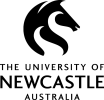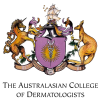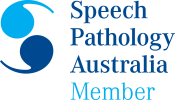Thyroid Conditions in Children
Whilst most people associate thyroid conditions with adults, children are also susceptible to thyroid issues. There are essentially two different types of thyroid problems found in children: congenital hypothyroidism and childhood onset hypothyroidism.
Congenital Hypothyroidism
This thyroid condition is present at birth, and is detected through the heel prick that all children undergo. Current statistics show that around one in 3,500 babies are born with hypothyroidism in the UK, and most of these cases are due to the thyroid gland failing to develop fully while in the womb. The cause of this condition is not fully understood, but treatment is necessary due to the dangers for the child.
Hypothyroidism is a condition that is marked by low levels of thyroid hormones in the body. One of these hormones, thyroxine, is an essential component in growth and development in children. During pregnancy, babies receive adequate amounts of this hormone through the mother’s production. However, after birth, babies who suffer from this condition are not able to produce enough thyroxine to properly support development.
Proper thyroxine levels are required throughout life, but they are much more important for an infant. This hormone is responsible for the healthy growth and development of every organ system in the body, which is why the heel prick test is so important. If congenital hypothyroidism is not treated within the first weeks after delivery, it can result in serious complications for the child, including brain damage. However, nearly every child that does receive proper treatment for this condition in a timely manner goes on to live a healthy life.
Neonatal screening for hypothyroidism
The neonatal heel prick or Guthrie test is a screening test done on newborns. It consists of making a pinprick puncture in one heel of the newborn and soaking the blood into pre-printed collection cards known as Guthrie cards. The blood samples can be used for a variety of metabolic test to detect genetic conditions, including congenital hypothyroidism.
If your baby is born with hypothyroidism, he or she will need to have thyroxine administered on a daily basis. The exact amount of the medication needed will change over time, depending on the results of frequent blood testing.
Childhood Onset Hypothyroidism
There is also hypothyroidism that occurs later in childhood. Childhood onset hypothyroidism is broken down into two forms; one is called Hashimoto’s thyroiditis, and the other is atrophic thyroiditis. Both forms are generally due the body’s immune response forming antibodies that destroy the function of the thyroid gland.
Hashimoto’s thyroiditis affects children by causing swelling and enlargement of the thyroid gland, which is often referred to as goiter. This form of hypothyroidism causes symptoms such as dry skin and hair, slow pulse, and changes in the facial features, much as they do in adults. However, these symptoms typically show up much later in the disease.
The second form, which is called atrophic thyroiditis, occurs without any signs of swelling, but results in the thyroid gland being completely destroyed. Children suffering from this form of acquired hypothyroidism show noticeable changes in their growth due to the lack of thyroxine in their bodies.
It is also possible for children to acquire Hashimoto’s thyroiditis, but end up with atrophic thyroiditis. No matter which form a child is suspected to have, diagnosing the thyroid problem requires blood testing to measure the amount of TSH and thyroxine.
Children who are diagnosed with hypothyroidism require treatment with oral thyroxine therapy. Once this treatment is started, most children experience excellent results. Children who have suffered growth issues due to decreased thyroxine levels are also able to quickly catch up with their growth, allowing them to return to normal. While children suffering from any form of childhood hypothyroidism will require oral thyroxine for the rest of their lives, they are still able to function normally with no adverse side effects.
Another thyroid related problem commonly seen in children is a thyroglossal cyst. Thyroglossal duct cyst often presents as a lump in the neck which may be painful. The thyroglossal duct is a structure which is important in the development of the thyroid gland in the embryo, and generally regresses in the majority of people. Thyroglossal duct cysts are most commonly diagnosed in patients before the age of 20; however, they can occur at any age.
Hypothyroidism in children can be very serious, so it is important that you speak to your child’s paediatrician or endocrinologist if you have any questions or concerns.
If you have questions about thyroid conditions in children contact your local doctor who will arrange for you to see a thyroid surgeon.
References
The post Thyroid Conditions in Children appeared first on Thyroid Clinic Sydney.










